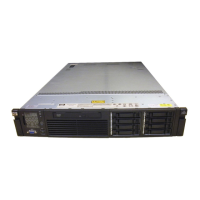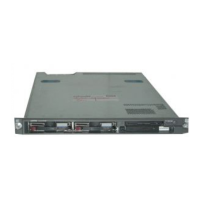5. At the EFI Boot Manager menu, choose an item from the boot options list.
Each item in the boot options list refers to a specific boot device and provides a specific set
of boot options or arguments to use when booting the device.
6. To initiate booting using the chosen boot option, press Enter.
7. Exit the console and iLO MP interfaces.
8. Press Ctrl–B to exit the system console and return to the MP Main Menu. To exit the MP Main
Menu, press X.
Booting HP OpenVMS from the UEFI Shell
From the EFI Shell environment, to boot OpenVMS on a device, first access the bootable partition
(for example fs0:) for the root device and, then enter\efi\vms\vms_loader to initiate the
OpenVMS loader.
1. Access the UEFI Shell.
2. From the UEFI Front Page, press S to launch the UEFI shell.
3. Use the map command to list the file systems (fs0, fs1, and so on) that are known and have
been mapped.
4. To select a file system to use, enter the mapped name followed by a colon (:). For example,
to operate with the boot device that is mapped as fs0, at the UEFI Shell prompt, enter fs0:.
5. When accessing the bootable partition for the desired boot device, issue
the\efi\vms\vms_loader command to initiate the vms_loader.efi loader on the device
you are accessing.
fs5:> \efi\vms\vms_loader.efi
fs5:> \efi\vms\vms_loader.efi
HP OpenVMS Industry Standard 64 Operating System, Version V8.4
© Copyright 1976-2010 Hewlett-Packard Development Company, L.P.
6. Exit the console and iLO MP interfaces.
7. Press Ctrl–B to exit the system console and return to the MP Main Menu. To exit the MP Main
Menu, press X.
Shutting down OpenVMS
1. Log in to OpenVMS running on the server that you want to shut down.
Log in to the iLO MP for the server, and then to access the system console, use the Console
menu. Accessing the console through the iLO MP enables you to maintain console access to
the server after HP OpenVMS has shut down.
Booting and shutting down HP OpenVMS 39

